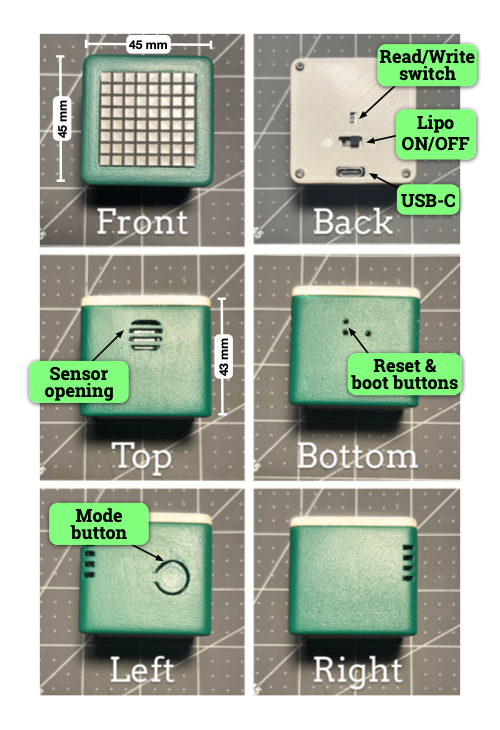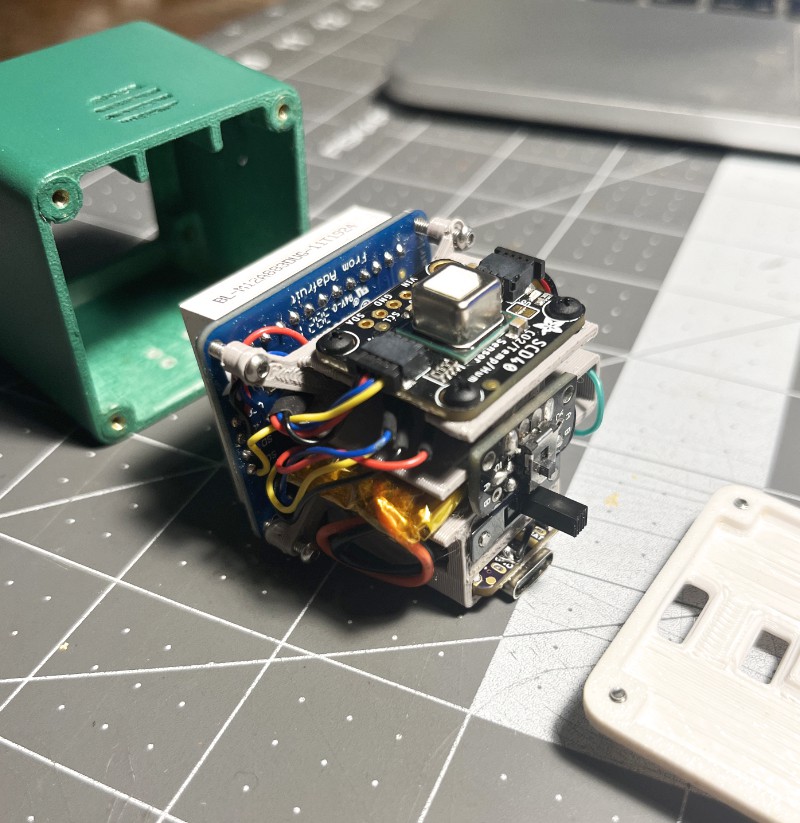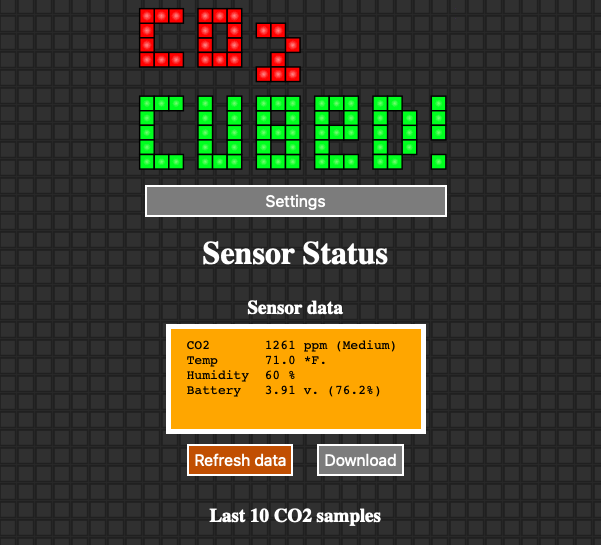Ventilation & Carbon dioxide:
Good ventilation is important for indoor air quality, especially for reducing the concentrations of pollutants and airborne viruses (looking at you, COVID-19!).
Measuring carbon dioxide (CO₂) can be a useful proxy for monitoring indoor ventilation, with higher concentrations of CO₂ suggestive of poor air flow/mixing compared to lower concentrations. With something like a portable CO₂ monitor you can quickly get an idea on a space's air mix, how CO₂ concentrations change with occupancy, and the effectiveness of different ventilation strategies.
While reputable monitors can be bought ~ $250 USD, it can be infinitely more fun make your own (and maybe save yourself $150 along the way).
The CO₂ Cubed:
Measuring 45 x 45 x 42 mm (1.77 x 1.77 x 1.65 inches), the CO₂ Cubed is my own little portable CO₂ monitor, with an 8x8 bicolour LED matrix, lipo battery, 3D printed case, and wifi connectivity.
The matrix with it's 64 pixels of red, green, or orange really does align perfectly with relaying high, low, or medium CO₂ levels. It also provides me with an interesting challenge of how to properly convey icons and visualise data (my attempt at an Earth icon with just green and orange LEDS was interpreted as "a broken dragon coin?" by my partner, which… fair).

For the microcontroller, I'm using an Adafruit QT PY ESP32-S2 with onboard antenna. It's small and has enough PSRAM to run my programming language of choice, CircuitPython without me worrying about running out of memory. It also has wifi (more on that below).
The CO₂ sensor is Adafruit's breakout of the SCD-40. With a range of 400 - 2000 ppm and accuracy of ± 50 ppm + 5% it's ideal for indoor monitoring. As a bonus it also measures temperature and relative humidity (woo!) and has STEMMA QT connectors for easy solder-less connections (double woo!).
A momentary switch on the side of the Cube allows navigating menus and pages with short and long presses, while a slide switch on the back turns the lipo power on and off.
All the electronics are mounted onto a 3D printed frame that slides and fastens to an outer case via heat-set inserts. The outer case was 3D printed in PETG, sanded, filled, and painted. Consideration was given to reducing the amount of 'dead air' around the sensor, where CO₂ could be trapped and decrease the response time of the sensor.

Wifi & changing settings
The Cube can optionally connect to wifi (because… of course). Primarily this allows me to send data to Adafruit IO to log and graph data over longer time periods, but it also gives me a way to change settings on-the-fly.
By generating it's own local webpage (either through connecting to a known wifi network or by hosting it's own private wifi), settings like LED brightness, page order, and the thresholds for low, medium, and high can be easily adjusted while out-and-about.
I'm still working on this aspect (HTTP servers and Javascript are new to me, and I've all but forgotten CSS), but it's slowly coming together.

Power
The Cube is powered from a 1s 350 mAh lipo battery and charged via the QT PY's USB-C port. Internally the lipo connects to a lipoly charger soldered to the QT PY, with an on/off switch and a voltage divider for basic battery monitoring.
Low power consumption wasn't a goal of this project. The cube draws 50 - 90 mA depending on whether wifi is on or not. In real world tests I get about 5 hours of continuous use with wifi, which could be greatly increased by using a biggeR battery aND by putting the microcontroller to sleep between readings.
Code
The...
Read more » Thornhill!
Thornhill!